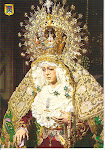














IGREJA DO SAO AGOSTINHO
The St Augustine Church is part of a monastery founded in 1586 by Spaniards. The facade was originally of Baroque style but the existing facade is more neoclassic dating from 1814.
St Augustine Church's marble-clad high altar contains a statue of Christ carrying the cross, Our Lord of the Passion (Nosso Senhor dos Passos).
Legend says that when the statue was moved to the Cathedral by Church authorities it would somehow return to St Augustine Church.
Ever since a procession is held every year on the first Sunday of Lent.
From St Augustine Church the statue is taken to the Cathedral for a night. The following day, the figure is carried through the streets back to the cathedral. Stations of the Cross are set up along the route.
This event is attended by the clergy and hundreds of Chinese faithful and believers.
Another twist of the story occured in 1712. That time the anti-Catholic government expelled the Augustinians and banned the Passos procession from St Augustine Church.
Suddenly there was a food shortage. The local Chinese immediately associated the two events. They therefore demanded that "the man with the cross" walk the streets again. Eventually the procession resumed and as expected, the shortage ended.
English services are held in St Augustine Church every Saturday and Sunday.
The deceased wife of the famous one-armed Captain Antonio Albuquerque is buried inside St Augustine Church.
Maria de Moura is the romantic heroine who married Coelho in 1710 who lost an arm thanks to one of her unsuccessful suitors. Unfortunately she died in child-birth and is buried with her baby and arm of Antonio. The tomb is right behind the main altar.
Three of the best paintings in St Augustine Church are now in the Luis Camoes Museum. These paintings are those of Saint Monica, Saint Augustine's mother, Saint Rita of Cassia and Saint Thomas of Vilanova.












No comments:
Post a Comment